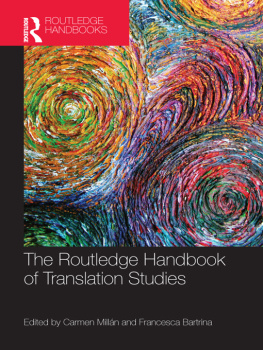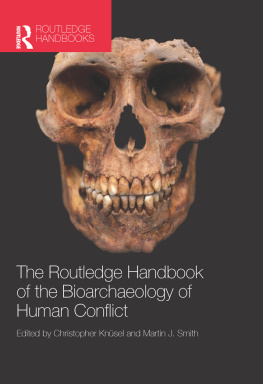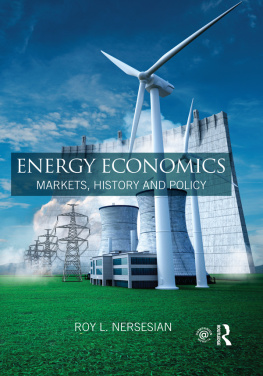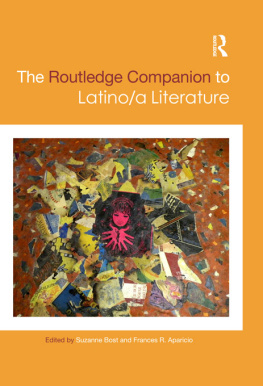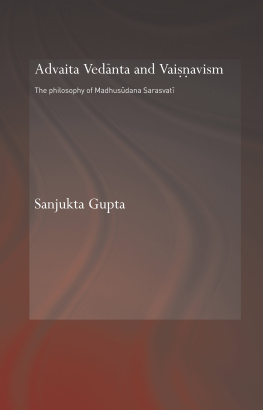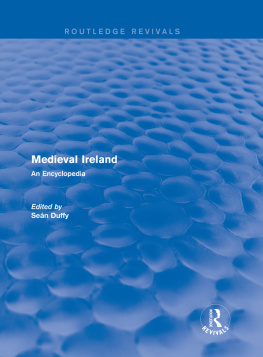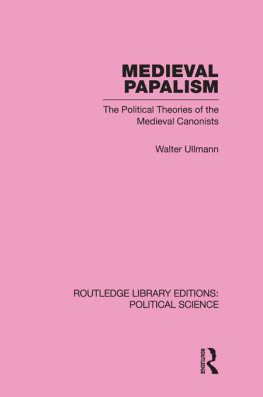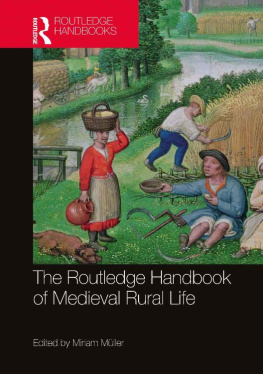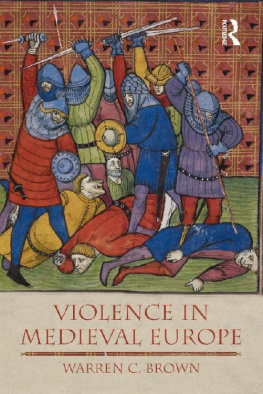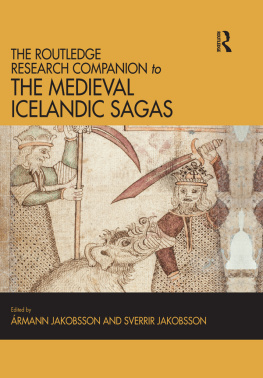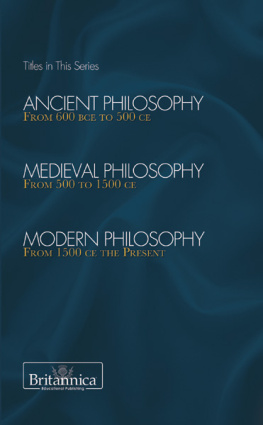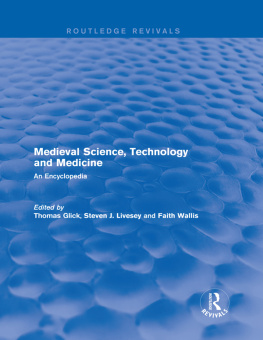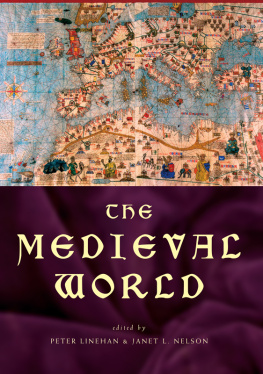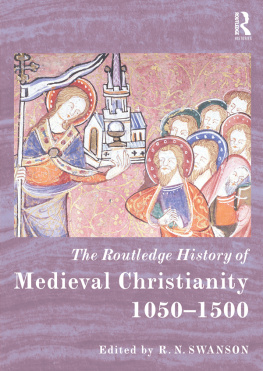Routledge. - Medieval Art
Here you can read online Routledge. - Medieval Art full text of the book (entire story) in english for free. Download pdf and epub, get meaning, cover and reviews about this ebook. City: London;New York, year: 2018, publisher: Taylor & Francis (CAM);Routledge Taylor & Francis Group, genre: Religion. Description of the work, (preface) as well as reviews are available. Best literature library LitArk.com created for fans of good reading and offers a wide selection of genres:
Romance novel
Science fiction
Adventure
Detective
Science
History
Home and family
Prose
Art
Politics
Computer
Non-fiction
Religion
Business
Children
Humor
Choose a favorite category and find really read worthwhile books. Enjoy immersion in the world of imagination, feel the emotions of the characters or learn something new for yourself, make an fascinating discovery.

- Book:Medieval Art
- Author:
- Publisher:Taylor & Francis (CAM);Routledge Taylor & Francis Group
- Genre:
- Year:2018
- City:London;New York
- Rating:5 / 5
- Favourites:Add to favourites
- Your mark:
- 100
- 1
- 2
- 3
- 4
- 5
Medieval Art: summary, description and annotation
We offer to read an annotation, description, summary or preface (depends on what the author of the book "Medieval Art" wrote himself). If you haven't found the necessary information about the book — write in the comments, we will try to find it.
Routledge.: author's other books
Who wrote Medieval Art? Find out the surname, the name of the author of the book and a list of all author's works by series.
Medieval Art — read online for free the complete book (whole text) full work
Below is the text of the book, divided by pages. System saving the place of the last page read, allows you to conveniently read the book "Medieval Art" online for free, without having to search again every time where you left off. Put a bookmark, and you can go to the page where you finished reading at any time.
Font size:
Interval:
Bookmark:
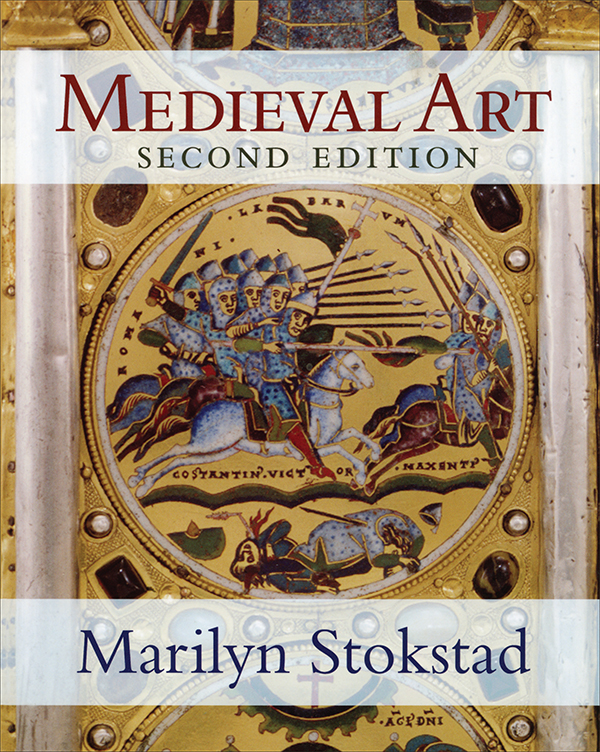
MEDIEVAL ART
MARILYN STOKSTAD
SECOND EDITION

First published 2004 by Westview Press
Published 2018 by Routledge
711 Third Avenue, New York, NY 10017, USA
2 Park Square, Milton Park, Abingdon, Oxon OX14 4RN
Routledge is an imprint of the Taylor & Francis Group, an informa business
Copyright 2004 by Marilyn Stokstad
All rights reserved. No part of this book may be reprinted or reproduced or utilised in any form or by any electronic, mechanical, or other means, now known or hereafter invented, including photocopying and recording, or in any information storage or retrieval system, without permission in writing from the publishers.
Notice:
Product or corporate names may be trademarks or registered trademarks, and are used only for identification and explanation without intent to infringe.
Text design by Brent Wilcox
Set in 11-point Adobe Garamond by the Perseus Books Group
Library of Congress Cataloging-in-Publication Data
Stokstad, Marilyn, 1929
Medieval art / Marilyn Stokstad.2nd ed.
p. cm.
Includes bibliographical references and index.
ISBN 978-0-8133-4114-9 (pbk. : alk. paper)ISBN 0-8133-3681-3
(hardcover : alk. paper)
1. Art, MedievalHistory. I. Title.
N5970.S75 2004
709. 02dc21
2003006643
ISBN 13: 978-0-8133-4114-9 (pbk)
Like those Celtic saints who confidently set sail for parts unknown on ships of millstones or cabbage leaves, I once accepted a strange mission and a challengeto write a survey of over a thousand years in the history of western art and architecture, from ancient Rome to the modern age of exploration. The Celtic sailor-saints, beset by flying fish, giant cats, and deep-sea monsters, made their way to new lands, to the very mouth of Hell, to the Blessed Isles, and back home again to tell their stories. This book, subject to a closer scrutiny than those ancient tales, suggests an intellectual voyage no less challenging and certainly just as enlightening.
Medieval Art, like most books by college professors, began as a set of lecture notes that changed over the years in response to the interests of students and the critiques of colleagues. My purpose in writing Medieval Art then as now was to introduce the reader, the museum visitor, and the student to extraordinarily complex and beautiful art and architecture. The diverse arts of painting (from tiny manuscript illustrations to huge stained glass windows), architecture, and sculpture are presented within the religious, political, and intellectual framework of lands as varied as France and Denmark, Spain and Germany countries that did not even exist as political entities in the Middle Ages. Over a thousand years of art had to be summarized within the constraints of a limited number of pages and illustrations.
Medieval Art includes the art and building of what is now Western Europe from the second to the fifteenth centuries. Although to Renaissance scholars the Middle Ages was a single dark period, a vast black hole in the triumphant development of western philosophy and science from the Greeks and Romans to their own enlightened days, the period is in fact extremely diverse. What do the painters of catacomb images have in common with artists of the imperial Byzantine court, or indeed with stone carvers in Ireland or builders of Gothic cathedrals? One would first say: a devotion to and sponsorship by the Christian church, whether the Latin church led by the Pope in Rome or the Orthodox church led by the Patriarch in Constantinople. However, one should note that religious art has survived, while secular art and architecture has largely vanished. Christianity, of course, was subject to constant interpretation and development, and the impact of non-Christian cultures influenced the form, if not the content, of the art.
The great cultures of Eastern Europe, of the Orthodox Church, of Judaism, and of Islam have been given far less attention that they deserve. These great arts, worthy of independent studies, have been presented primarily as sources of influence and inspiration for the art of the West. Late Medieval art has also been given a more cursory treatment than I would wish. This material, however, has been included in books on northern Renaissance art or, in the case of Italian art, as a prelude to the Renaissance. In a limited and highly selective text many favorite monumentsbe they cathedrals or jewelshave been omitted. I have often chosen my own favorites to discuss and illustrate. When possible I have used works now in American museums, hoping to encourage the study of local collections. The reader will also note the inclusion of some less traditional work. This probably stems from my interest in the art of northern Europe, an interest that led me, as a student, back in time from the paintings of Edvard Munch to the art of the Vikings. I have continued to follow those Viking hordes, exploring coasts and rivers of Western Europe, thus giving this book a slightly peninsular and insular focus. The inclusion of Scandinavian, British, or Spanish art may sometimes be at the expense of a more traditional focus on France, Italy, and Germany. Even the added attention paid to the so-called cloister crafts or decorative arts might be attributed by the fanciful reader to my admiration for the brilliant, sparkling, and exquisite work of northern goldsmiths.
The book has gone through many transformations, and the present text bears little resemblance to the one read by colleagues many years ago. The original projectto summarize and define the styles found in over a thousand years of art and architecturewas twice abandoned, but finally, with the encouragement of family and friends and the enthusiastic support of Cass Canfield Jr., creator of the Icon Editions, the book was finally completed. When the Icon Editions became part of Westview Press, Sarah Warner took over the vital managing role of Senior Editor for this new edition of Medieval Art.
In the beginning, before there was a first edition of Medieval Art, three medievalists worked very hard with me on the project: the late Franklin Ludden and the ever-optimistic William Clark and Ann Zielinski. My heartfelt thanks to them and to all those other friends and colleagues, some of whom know parts of the original manuscript only too well and others who offered advice, criticism, and encouragement. Among the many who have tried to save me from egregious error are Santiago Alcolea, Peter Barnet, Janetta Benton, Sara Blick, Jonathan Bloom, Robert Bork, Katherine Reynolds Brown, Walter Cahn, Robert Calkins, Annemarie Weyl Carr, Madeline Caviness, John Clark, Robert Cohon, Walter Denny, William Diebold, Jerrilynn Dodds, Lois Drewer, Marvin Eisenberg, James DEmilio, Helen Evans, Ilene Forsyth, Paula Gerson, Dorothy Gillerman, Dorothy Glass, Stephen Goddard, Oleg Grabar, Cynthia Hahn, M. F. Hearn, Ruth Kolarik, Charles Little, Janice Mann, Serafin Moralejo, Karl Morrison, Lawrence Nees, Judith Oliver, Virginia Raguin, Paul Rehak, Richard Ring, Lucy Freeman Sandler, Elizabeth Sears, Pamela Sheingorn, Mary Shepard, David Simon, Anne Ruddoff Stanton, Roger Stalley, Neil Stratford, Thomas Sullivan, Elizabeth Valdez del Alamo, Amy Vandersal, Otto Karl Werckmeister, John Williams, William Wixom, and John Younger. Graduate Research and teaching assistants who have helped me include Ted Meadows, Martha Mundes, Donald Sloan, and Jill Vessely. Reed Anderson revised the bibliography for this new edition. The words of others still ring in my ears: Harold Wethey, Jane Hayward, Thomas Lyman, George Forsyth, Robert Van Nice, Marie-Madeleine Gauthier, Jose Gudiol Ricart, and Juan Ainaud de Lasarte.
Font size:
Interval:
Bookmark:
Similar books «Medieval Art»
Look at similar books to Medieval Art. We have selected literature similar in name and meaning in the hope of providing readers with more options to find new, interesting, not yet read works.
Discussion, reviews of the book Medieval Art and just readers' own opinions. Leave your comments, write what you think about the work, its meaning or the main characters. Specify what exactly you liked and what you didn't like, and why you think so.

